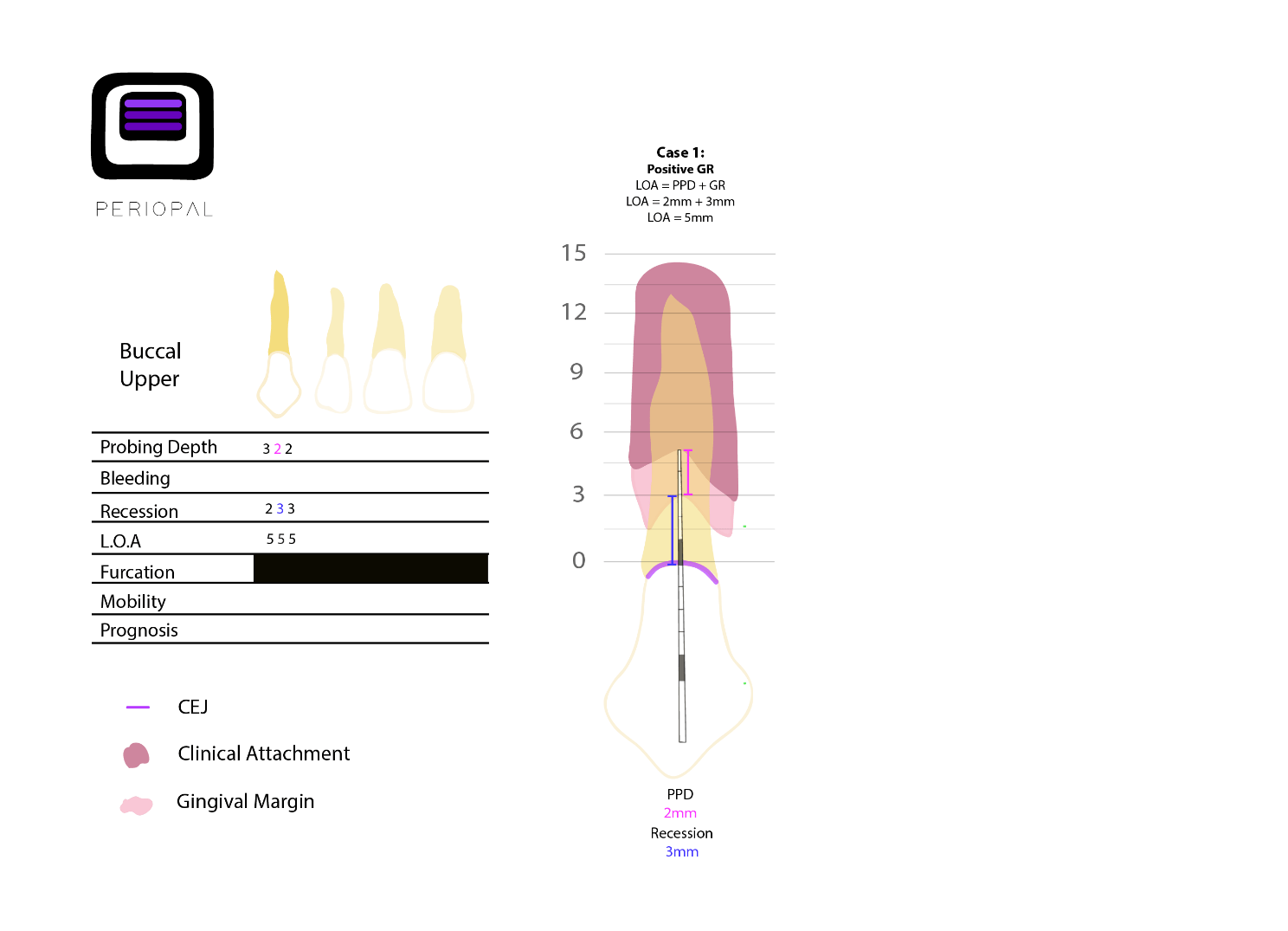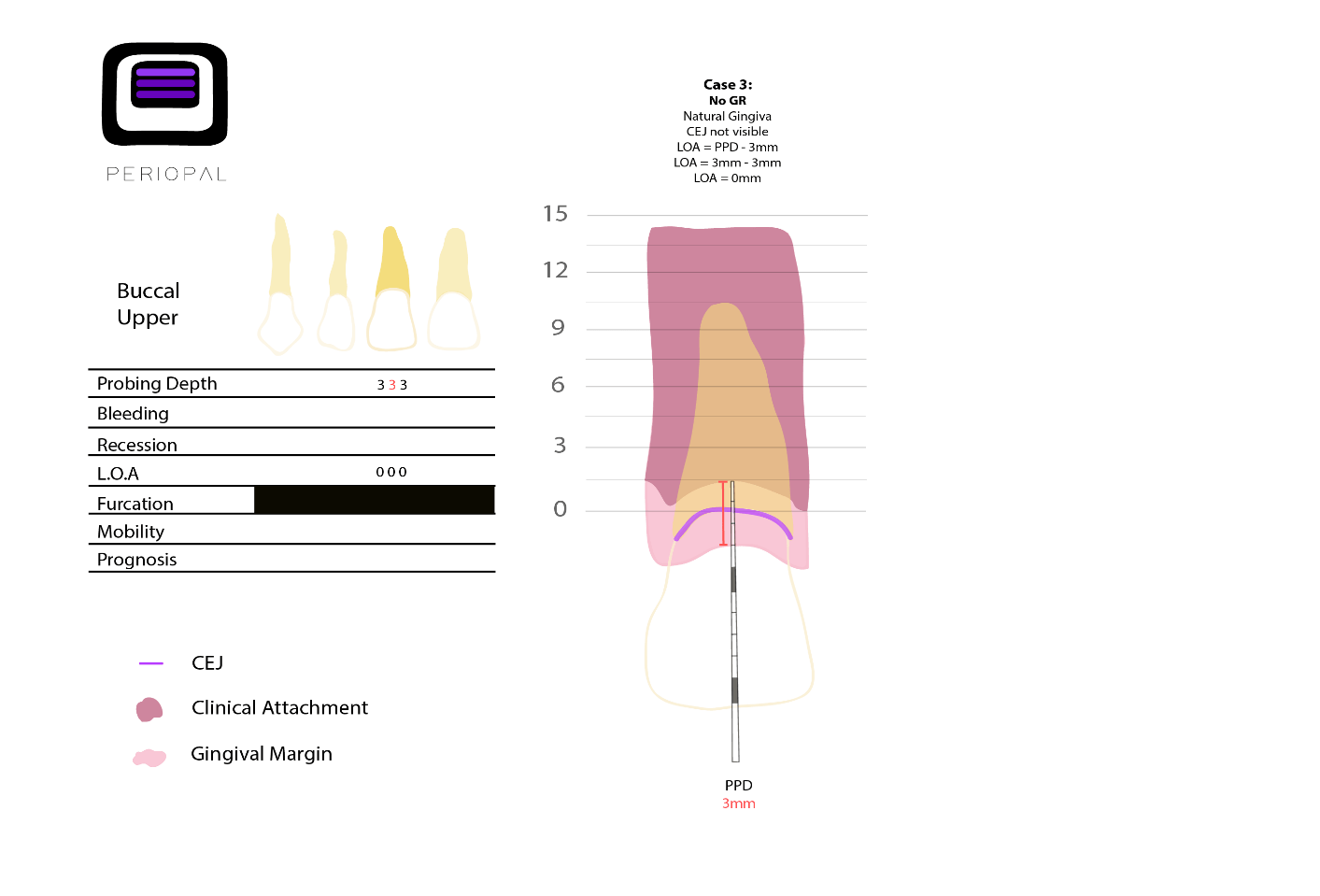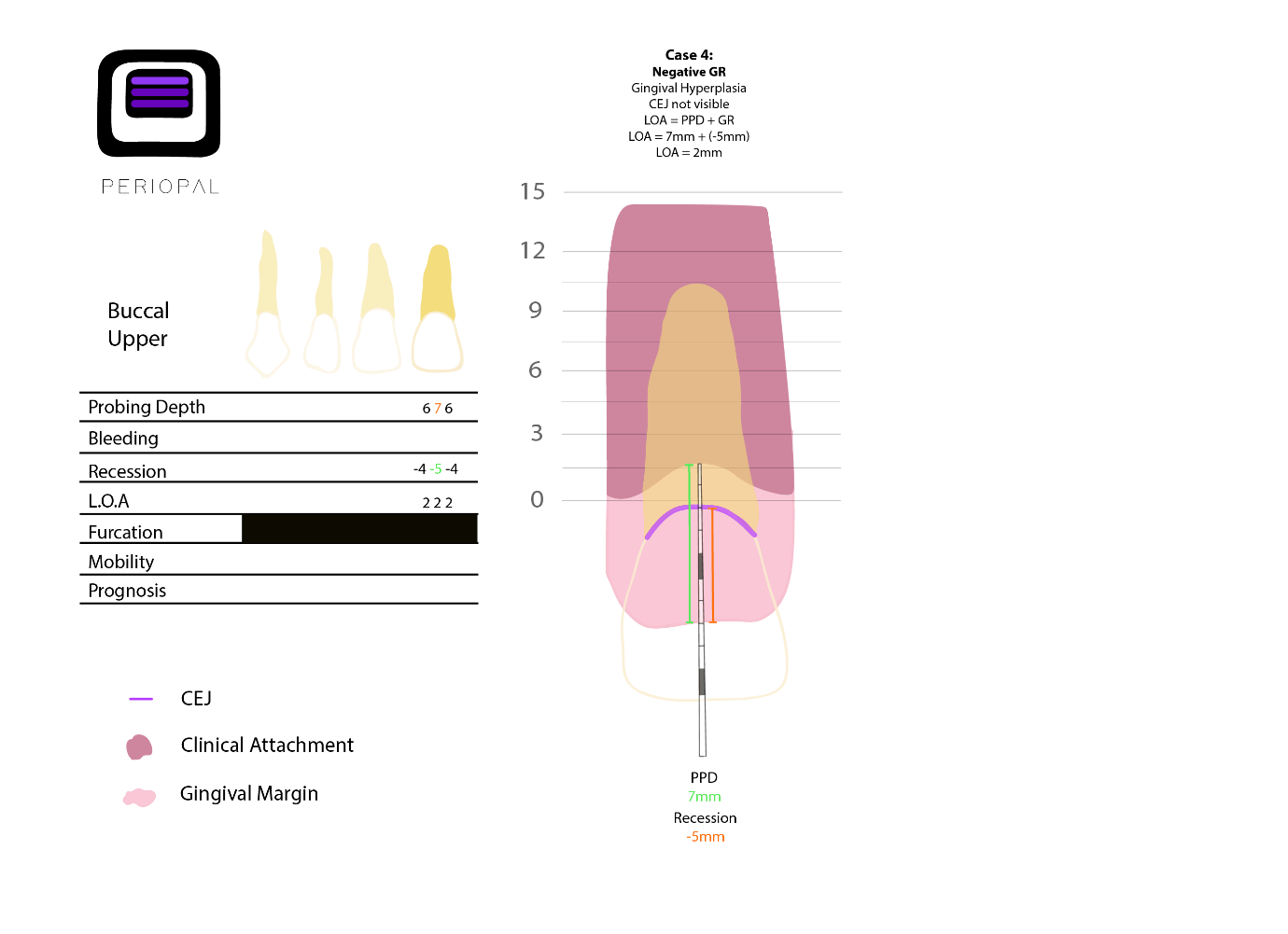Clinical attachment level/loss (CAL) or level/loss of attachment (LOA)
Clinical attachment level/loss (CAL) or level/loss of attachment (LOA) – measured in mm as distance from the CEJ to the gingival margin (GM). LOA provides an estimation of the true periodontal support and is used for monitoring changes in periodontal support over time. CAL is easily measured when CEJ is exposed/visible. CAL can also be calculated following the formula CAL (mm)=PD (mm)+GR (mm).
CAL can’t be negative “-“.
For example:
If PPD = 6mm & GR= 3mm
LOA (CAL)= PPD (mm)+GR (mm) = 6mm + 3mm = 9mm



